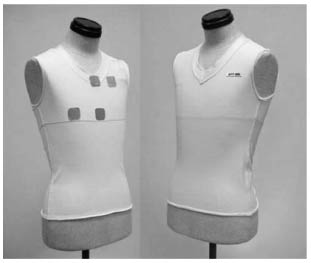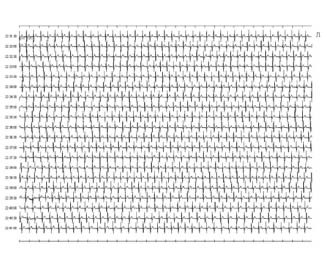Ā@
and Koji Sumitomo
Materials Science Laboratory
In todayĀfs aging society, the continuous monitoring of the heartbeat and electrocardiograms is expected to reduce the risk of a heart attack (sudden death) through the early detection and early treatment of any cardiac malfunction. Monitoring is also effective in preventing the physical overload caused by improper exercise and the accumulation of mental stress. However, conventional biomedical electrodes use an electrolyte paste or gel, which results in excessive wetting of the skin surface and occasionally causes skin irritation or contact dermatitis. The conductive polymer (PEDOT-PSS) coated silk or synthetic fibers have been used to fabricate wearable electrodes to obtain biomedical recordings [1]. The new bioelectrode made of conductive fiber is flexible, biocompatible, and hydrophilic and thus allows stable recording of bioelectric signals equivalent to that of a conventional electrode,without using any electrolyte paste or gel. Experiments on human volunteers (10 able-bodied people) wearing undershirts equipped with the electrode (Fig. 1) revealed successful long-term recording of the heartbeat and electrocardiograms (Fig. 2) [2]. Based on this result, the heartbeat and electrocardiograms can be monitored continuously simply by wearing the electrode shirts. We can expect the electrode to find various applications in sports, health enhancement, and the support of medical diagnosis, as well as scientific research.
[1] S. Tsukada, H. Nakashima and K. Torimitsu, PLoS ONE 7(4) (2012) e33689.
[2] 2013 Feb 12 NTT Press release.
Ā@
 |
 |
|||||
|
|